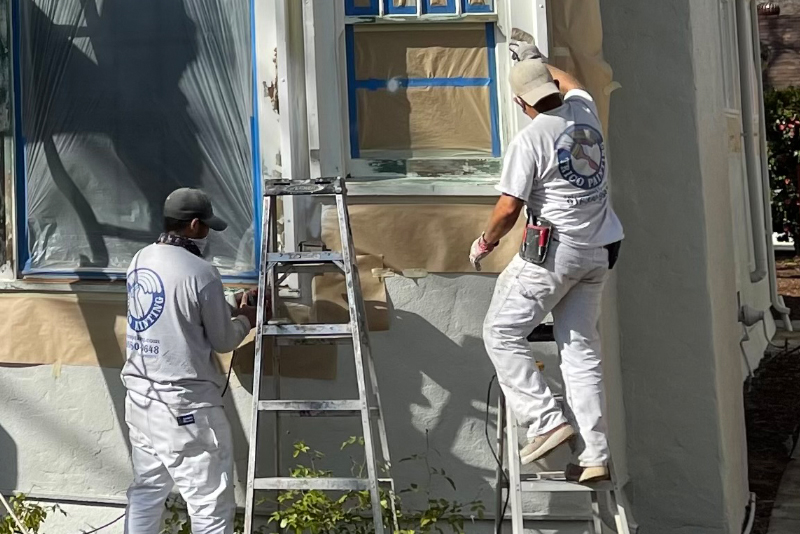3 Main Steps to Painting an Older Home
One of the perks of owning an older home is the rich character it brings. But over time, if not properly maintained, that character could turn into an eyesore. If your house’s exterior walls are beginning to show their age, it may be time for a little update. A fresh coat of paint is a great way to bring some life back into your home, but because of its age, there are three important steps to remember when it comes to exterior painting.
Step 1: Wash and Clean
While most professional painters will resort to pressure washing to remove dirt and buildup off exterior walls, pressure washing your home yourself could be detrimental. If you have little experience with a pressure washer, you could actually damage your walls or break a window. If you decide to wash the walls yourself, you can use scrub brushes, a good detergent, and a regular water hose. Because older homes’ walls may be more delicate than those of a newer home due to their age and the materials they are made from, hiring a professional painter to handle the job is a great option to consider. Whichever way you go, a clean surface is crucial to a successful paint job.
Step 2: Scrape and Sand
If your house was built before 1978, there’s a good chance that it may contain lead. If so, you will need to take extra precautions when moving forward. To see if your house’s paint does contain lead, you can talk to a professional painting company for the best tips on where to have a paint chip tested to know for certain. If a test confirms that there is lead in your paint, you will need special materials to keep you, your family, and the environment around you safe from the toxic dust when scraping. If your paint comes back lead-free, then a quality dust mask will suffice.
Scraping and sanding is a very time-consuming process, but it is essential to ensuring a long-lasting paint job. Before you begin, be sure to cover any nearby landscaping with tarps to prevent any debris from landing on top of them. To remove any bubbled, peeling, or blistered paint, you will first need to scrape the paint spots off. While you can use a power grinder to scrape, doing so by hand will cause the least amount of damage to your walls.
Once you’ve scraped, you will then need to sand over the spots. For this part of the project, orbit or pad sanders are a good choice of tool to use. Once the transition from bare wood to old paint seems smooth, you can move on.
Step 3: Prep and Prime
Before you begin the painting, this last step is a must. If there is any rot in the siding, those pieces will need to be repaired or replaced, depending on how bad the damage is. Lastly, fill any holes, cracks, or dents.
Once the prep work is complete, prime your exterior walls and let them dry. When priming cedar or redwood, you will need to use an oil-based primer coating. To keep nail heads from bleeding through your paint, don’t forget to use a metal primer to prevent rusting on those spots. After the priming is finished, make sure to caulk the cracks in the siding and trim. Once the caulking is done, you are ready for the best part: painting your home!
Need Help? The Pros Are Here
Whether it’s interior painting or exterior, painting a house is a time-consuming process. From properly preparing your surfaces to cleaning up the mess after, you’ll need to block out days to complete these kinds of projects. If you’re ready to give your home a makeover but just don’t have the time or experience needed to successfully do so, the professionals at TRICO PAINTING are a phone call away! Contact us today for an estimate on your exterior painting project.

